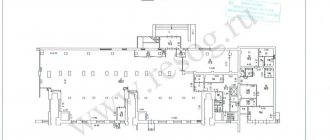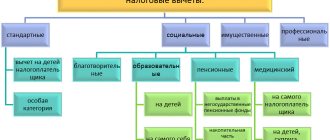The inventory value is the price of the property, taking into account the financial costs of its restoration, the level of wear and tear, the cost of building materials and construction work. When calculating, the total area of the facility and the presence of communication systems (water, heating, gas, electricity, drainage) are taken into account. However, the inventory value dealt with by the BTI does not take into account many important parameters, which was the reason for the emergence of the cadastral value, which is now used for taxation and determining prices for sales transactions.
Taking into account the above, one can also notice the fact that the inventory price of real estate is significantly lower than the market and cadastral price. This is due to the fact that it is not taken into account here
location, infrastructure and cost of land.
Until 2015, the inventory assessment was considered the main figure by which real estate taxes were calculated. Afterwards, in the same 2015, the inventory or cadastral valuation was taken into account for taxation. Today, the relevance of inventory has decreased to almost zero.
What is it for?
Inventory, which is handled by the BTI, has lost its practical significance in the field of taxation, but this indicator continues to be calculated and used. So, for example, this cost is taken into account for:
Dear readers!
Our articles talk about typical ways to resolve legal issues, but each case is unique. If you want to find out how to solve your specific problem, please contact the online consultant form on the right →
It's fast and free!
Or call us by phone (24/7):
If you want to find out how to solve your particular problem, call us by phone. It's fast and free!
+7 Moscow,
Moscow region
+7 Saint Petersburg,
Leningrad region
+7 Regions
(free call for all regions of Russia)
- Registration of privatization of real estate into personal property for citizens of the Russian Federation;
- Determination of market valuation of real estate;
- Challenging the cadastral price of an object.
The Technical Inventory Bureau carries out calculations based on the implementation of technical measures and documents issued as a result of them. The approved recalculation methodology is also taken into account, taking into account the physical deterioration of the entire building.
Despite the fact that today there has been a complete transition of the taxation system to cadastral valuation, in some cases, if we are talking about real estate that was privatized in the early nineties, the inventory value is important for determining the tax. This is due to the fact that such real estate often does not have a cadastral number. Accordingly, if there is no information about the object in the cadastral database, the conditional number obtained earlier will be taken into account.
Identifying differences
Valuation of real estate taking into account its inventory value is very different from cadastre calculations. Accordingly, when selling the object, the price would be different.
| What is taken into account in the BTI | What is taken into account in the cadastre |
|
|
What both assessments have in common is the area of the property.
Accordingly, if the cost is determined incorrectly and incorrect information is entered into the unified register, this can lead to many inconveniences and problems in the future. We are talking not only about incorrect assessment of real estate taxes, but also about concluding any kind of transactions, as well as obtaining benefits for the owner. Issues with incorrect pricing are not always resolved locally and peacefully, so sometimes you have to resort to the help of the court. However, before this, it is important to apply officially to other government agencies so that the plaintiff has evidence of the existence of grounds for going to court.
How to dispute and where to go?
To challenge the inventory value of housing, you can contact two authorities:
- to the assessment agency;
- to court.
In the first case, an application to the institution should be submitted on the basis of an application. In it, indicate your disagreement with the obtained indicator, and indicate that repeated calculations should be carried out. If employees of an organization refuse to accept and consider a complaint, it is worth going to court.
Through the court
If the inventory indicator could not be challenged in the BTI, it is necessary to file an appeal to the court. When applying, you need compelling reasons. It is important to correctly draw up a statement of claim and collect the necessary package of documents.
To go to court, you must consult a lawyer. A competent specialist will advise you on the correctness of filing a claim.
The procedure for going to court to challenge the inventory value of an apartment:
- existence of grounds for filing a complaint with the court;
- collection of documents;
- submission of a list of documents;
- plus - if there is information about an independent expert assessment of housing (if not, it will be ordered by the court).
Documentation
A package of documents is submitted to the court to challenge the inventory value calculated by the Bureau. To appeal the indicator, you must contact the Arbitration Court. When considering a case, the body that conducted the assessment acts as a defendant.
List of documents to challenge the inventory indicator:
- a copy of a certificate from the BTI containing incorrect information;
- documentary evidence of contacting the BTI to challenge the indicator;
- witness testimony of an appeal to the BTI to challenge the indicator (if any);
- passport of the owners of the property;
- documents evidencing the right of ownership of housing;
- documentary evidence of an independent assessment (if any);
- statement of claim - submitted in two copies (one copy for the judge, the other for the defendant);
- receipt of paid state duty.
To challenge the assessment, a statement of claim to the Arbitration Court must reflect:
- details of the court;
- information about the plaintiff;
- information about the defendant (BTI);
- table of contents;
- the essence of the letter, indicate the reasons for challenging, requirements and provide links to legislative norms;
- describe the list of attachments to the letter (attached documents);
- date and signature of the plaintiff.
The calculation of the inventory assessment is individual for each residential premises. Therefore, if BTI employees carry out incorrect calculations, seek help from a lawyer for advice.
Conducting an assessment
Disputing the inventory value of a property is carried out exclusively by government agencies on the initiative of individuals or legal entities, that is, property owners. The assessment itself is carried out by the Bureau of Technical Inventory based on the decision of local governments.
Taking into account federal standards, planned assessments are carried out en masse, but when challenging, a certain controversial object is taken and a special commission is appointed with an examination. Even though the assessment is initially carried out en masse, this does not mean that the same standards apply to everyone. Real estate is divided into groups that have related technical characteristics and main factors, such as the same building materials, location, etc. For each case, a standard formula is applied.
When challenging the inventory value of a building, individual premises or other object, independent experts who have the right to carry out such activities are also involved. Based on the results of the examination, appropriate documentation is drawn up and attached to the court case.
Why do you need an inventory value of a property?
Determining the inventory value of a property is the responsibility of the technical inventory bureau (BTI). The guideline for the BTI is the “Procedure for assessing buildings...”, which was approved by order of the Minister of Architecture and Construction of the Russian Federation N 87 dated 04.04.92. The replacement cost of an object is determined by the price level of 1991, using indices and coefficients introduced by Decree of the USSR State Construction Committee dated May 11, 1983 N 94. BTI issues a certificate stating the inventory value of your property if, for example, you need to inherit or pay tax. Such a certificate should not be issued in advance, because its validity period is limited. In addition, BTI annually submits to the tax service the inventory value of the object as of January 1.
How to get information?
Before an inventory value can be disputed, an official document with current figures must be obtained. The following information is issued in the form of a certificate, and you can request it:
- By contacting the territorial office of the Bureau of Technical Inventory with a request, but only if data is needed before 2013;
- Submit a corresponding request to Rosreestr if the real estate is registered in the cadastral register.
Having information about the original cost of a real estate property, you can calculate the inventory value yourself.
When contacting the Bureau of Technical Inventory, you will need to fill out an application according to the sample, present your personal passport and documents certifying ownership of the object of interest. Next, the BTI has the right to make a request to the state archive, where all information is stored.
When contacting Rosreestr, the issued certificate will indicate the inventory value in accordance with the information obtained as a result of cadastral registration. However, you should know that even the cadastral value can be challenged in court if necessary.
What is this?
The inventory value of an apartment (house) is an estimated value, which is calculated according to the BTI assessment. The value is calculated taking into account many indicators.
The cost is calculated based on:
- housing area;
- communal amenities - their presence and absence;
- year of commissioning of the house;
- comfort at home;
- the value of the land under the house;
- number of floors in the building;
- wear and tear of the structure.
The inventory value is determined below the market and cadastral value, since its calculation takes into account the prices for the construction of the building, materials and work.
Inventory value is calculated for:
- privatization of living space;
- for the sale of an apartment;
- to challenge the cadastral value of housing;
- when purchasing residential space;
- when exchanging apartments;
- for a gift agreement;
- to calculate property tax collection;
When privatizing an apartment, you need to find out this indicator in the BTI. After submitting a certain package of documents, the institution will issue a certificate on the basis of which you can formalize the privatization of housing. Documents for obtaining an assessment at the BTI:
- passport of the owner of the residential premises;
- documents evidencing ownership of property;
- application (written at the department of the institution).
The period for receiving a certificate ranges from 3 to 7 working days. When the certificate is ready, you will be notified when applying for it.
If you disagree with the value specified in the certificate, the homeowner has the right to challenge the indicator in court.
Reasons
When calculating the indicator, employees of the Bureau of Technical Inventory may make mistakes, which will consequently lead to an incorrect value of housing value. If a situation arises in which the owner doubts the obtained value, it is necessary to file a claim in court. A claim can be filed if there are compelling reasons, otherwise it will not be accepted for consideration by the court.
Grounds for challenging the inventory value of an apartment:
- the result obtained from the BTI significantly exceeds or is equal to the market value of the housing;
- Incorrect information was used in the calculation.
When calculating values in newly built houses, the inventory value and market value may be equal. If there are grounds, the homeowner has the right to challenge the inventory value of the home.
About challenging
The calculation of the amount of property tax is no longer carried out based on the inventory assessment indicators, and it is no longer transferred to the tax authorities from the BTI or Rosreestr. However, such information significantly affects the market price of housing, although, unlike the cadastral valuation, it does not affect the taxes payable by the owners.
It is possible to challenge the cadastral and inventory values used for taxation of real estate. To do this, you need to order a report on the market valuation of real estate from an independent professional appraiser. This specialist will conduct research and calculate the price of the object, based on the combined values of several methods (comparative, cost, analytical, etc.).
For the report, the parameters of the cadastral and inventory assessment of the object under study will be used. Based on the results of the assessment, the owner will receive a conclusion that can be used as evidence in court. If the value obtained as a result of the assessment turns out to be lower than the inventory value, it will be possible to challenge the inflated price level in court. If a court decision equates the cadastral or inventory value of property to the market price, these changes will be required to take into account not only the Rosreestr authorities, but also the tax authorities.
In this case, tax liabilities for the last billing period will be recalculated, which is also disputed, and tax payments will be calculated in the future using the data specified in court.
Disputing inventory value
Certificate from the investigator of the ONDiPR for the Ustyuzhensky district, A.N. Sharapov. dated 01/31/2019 No. 9-2-17 that on 07/14/1991 in the village of Stepachevo, Khripelevsky village council, Ustyuzhensky district, a building was destroyed as a result of a fire - a hay barn, the court does not recognize as evidence for not accruing V. oh E.V. tax on this building, since the hay barn with cadastral number 35:19:0301012:54, for which V. oh E.F. tax accrued for 2015, located in the village of Kvashnino, Ustyuzhensky district, Vologda region.
We recommend reading: The apartment was purchased with maternity capital, when can it be sold?








